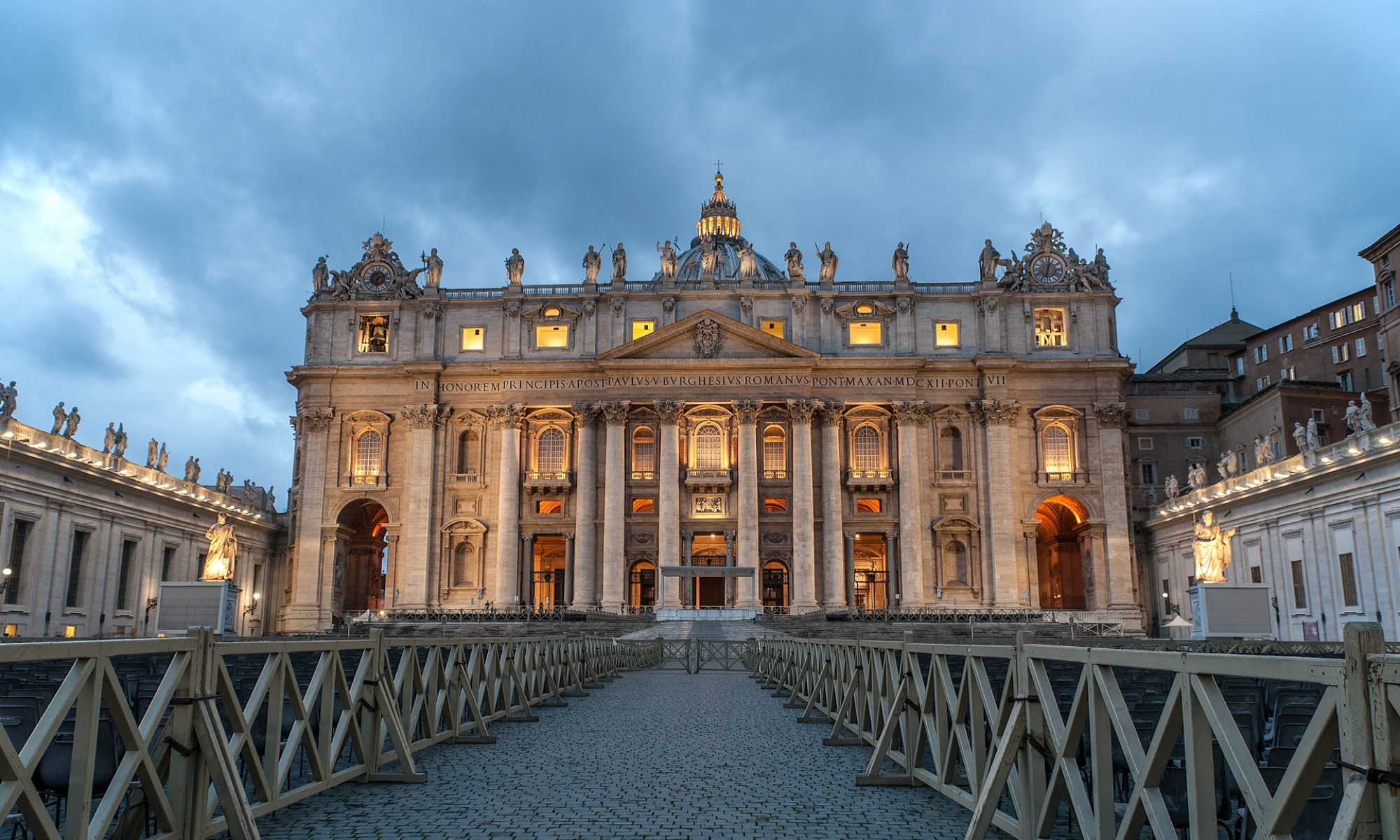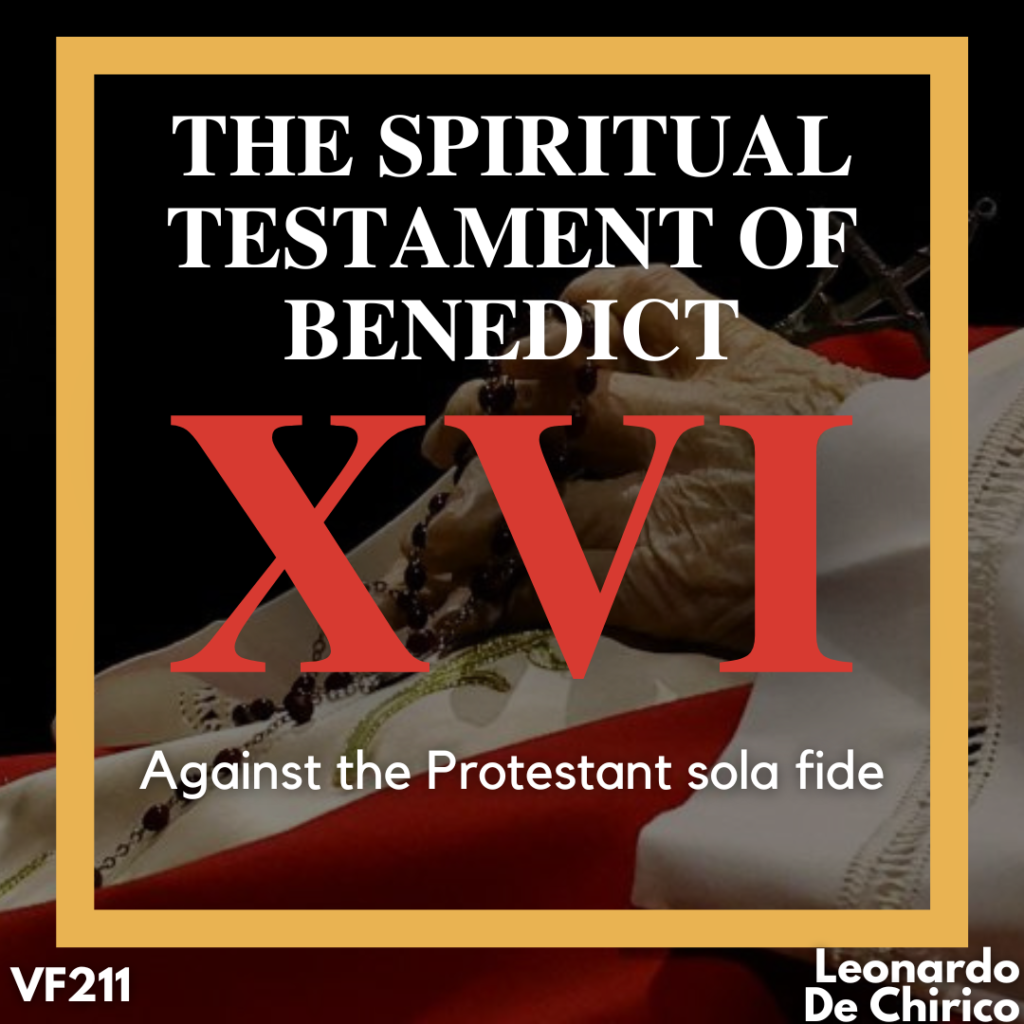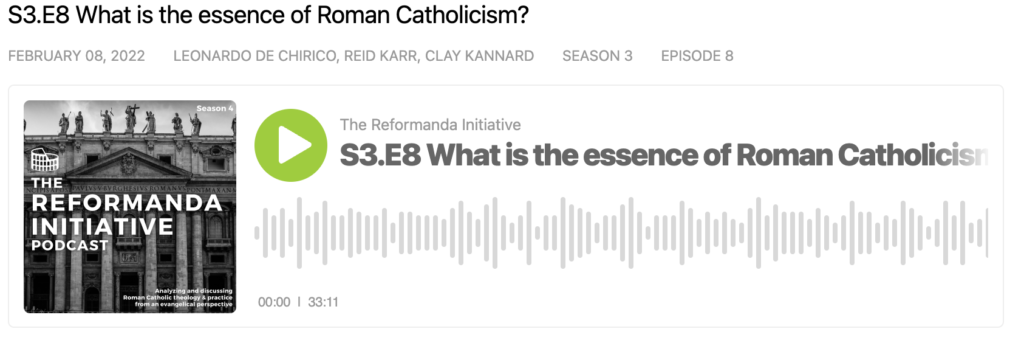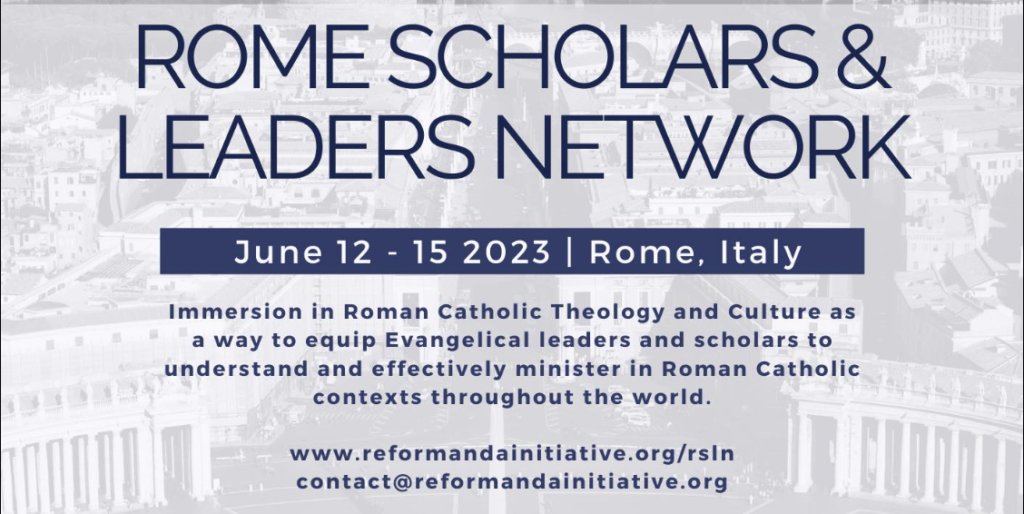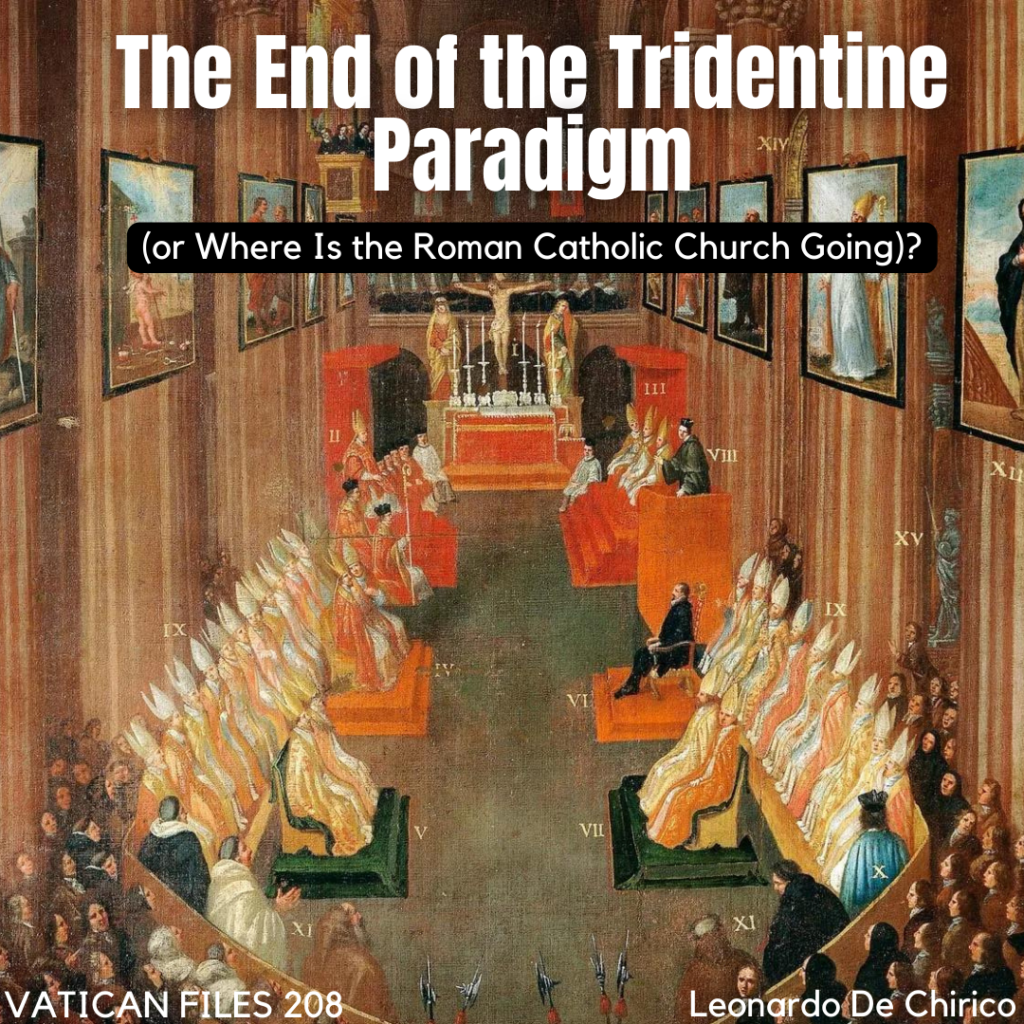Thomas Aquinas (1225-1274) is the Roman Catholic theologian par excellence. For centuries he has embodied the letter and the spirit of the theology of the church of Rome. Combining rationality and contemplation, rigor and passion, study and devotion, his thought has touched on the different traits of Catholic life inspiring the intellectual sophistications and the popular beliefs, the academic pursuits, and the devotional imaginations. The reception of his legacy has not been without conflicts of interpretation and different seasons of greater or lesser influence. Yet, the Wirkungsgeschichte (history of effects) indicates that there would not have been the anti-Protestant Roman Catholicism of the Council of Trent (1545-1563), the anti-modernist Roman Catholicism of Vatican I (1870), and then the ecumenical Roman Catholicism of Vatican II (1962-1965) without Thomas Aquinas inspiring them all in different ways. Difficult to dispute is church historian David Schaff’s claim that “the theology of the Angelic Doctor (Thomas’s nickname in Catholic circles) and the theology of the Roman Catholic Church are identical in all particulars except the immaculate conception. Anyone who understands Thomas understands medieval theology at its peak and has access to the doctrinal system of the Roman Church.”[1] At least symbolically if not theologically, Thomas is to Roman Catholicism in all its internal versions what Luther and Calvin are to the Reformation in all its variants: father-like figures.
By contrast, until a few years ago, precisely because of his close identification with Roman Catholicism, few would have dreamed of seeing Thomas associated with a “Protestant” sensibility. It is true that, in Thomistic studies, there is a vein that interpreted Thomas from the point of view of him being associated with evangelical traits. For example, M.-D. Chenu refers to this view when he claims that “the evangelical vocation of brother Thomas Aquinas is at the origin of his theology.”[2] Certainly, the reference to the “evangelical” must be interpreted here in a very broad sense that is vaguely inspired by the Gospel in a form compatible with traditional Roman Catholic doctrine and experience.
In recent decades and with increasing intensification, Thomas has instead been brought closer to a Protestant theological sensibility. In the German and Lutheran context, in 1964, Ulrich Kühn wondered whether Thomas belonged only to the Roman church as the apex of the medieval synthesis or whether an “Evangelical Thomas or at least a Thomas who has important things to say to evangelical theology”[3] was in need to be discovered. In the Anglo-Saxon circles, in 1985, a book critically scrutinized the perceived distrust of contemporary evangelical thought (for example: Cornelius Van Til and Francis Schaeffer) towards Thomas and considered it more of a reaction towards 19th century Neo-thomist images of Thomas than on Aquinas himself.[4] Then there were those who worked hard to provide a very positive “evangelical” evaluation of Thomas in an attempt to rehabilitate above all his metaphysics and epistemology in their apologetical endeavors.[5] In an unassuming little article, but which opened a crack that later became a gash, a respected North American evangelical theologian peremptorily entitled his essay: “Thomas Aquinas was a Protestant.”[6] According to the article’s daring thesis, Thomas’s theology was close, not to say overlapping, to the “formal principle” of the Protestant Reformation (Scripture Alone) and its “material principle” (Faith Alone), making him a forerunner of the Reformation, also with regard to the doctrine of justification. In more recent years, academic circles influenced by the theology of Karl Barth have also begun an operation of re-appropriation of Thomas in the form of theological ecumenism and referred to as “Protestant Thomism” or “Thomistic Protestantism.”[7] Similar phenomena can be found in the works stemming from “radical orthodoxy.”[8]
In fact, there seems to be a widespread perception today that Thomas is no longer a heritage for Roman Catholics alone[9] and that Evangelicals can and should learn a great deal from Thomas.[10] On the Roman Catholic side, there are even those who have gone so far as to argue that the Roman Catholic Thomas Aquinas is both Protestant and Evangelical:[11] the real Doctor communis! If even a theologian as critical of Thomas as Scott Oliphint answers, “perhaps”,[12] when asked if Thomas would have joined the Reformation had he lived 250 later, then we must understand that it is not far-fetched theologically to ask if Thomas could indeed be considered an evangelical.
In light of this changing scenario, today, the most serious evangelical research on Thomas Aquinas looks in a series of directions:[13]
– on the use of Thomas that the Magisterial Reformers made of Thomas—above all reformed and Lutheran scholasticism. While Luther’s contemptuous judgment of Thomas is known (“Thomas est loquacissimus quia metaphysica est seductus,” “Thomas is very loquacious because he is seduced by metaphysics”),[14] the subsequent interpretations in the Lutheran and Reformed traditions are less trenchant, sometimes sympathetic.[15]
– on the sustainability of a kind of anti-Thomas prejudice of certain contemporary evangelical thought which seems more committed to combating the deviant rigidities of neo-Thomism than to understanding Thomas himself in his complexity.
– on the theological gain that evangelical research would receive from the re-evaluation of the legacy of Thomas to counter certain traits of Fundamentalism (which has an unresolved view of “tradition”) and the temptations of incipient neo-liberalism (which is attracted to what is modern for the sake of being accepted by the mainstream culture).[16]
In our current cultural climate, the reference to the metaphysics of Thomas, capable of keeping Plato, Aristotle, and the Bible together—in short, the entire pre-modern Western tradition—produces an anxiolytic effect in some sectors of evangelical theology. Thomas functions as a primary symbol of the “great tradition” that unites Christian antiquity and modernity. In a world that is skeptical and suspicious of any meta-narrative, Thomas’s metaphysics and epistemology exerts some apologetic appeal, claiming to harmoniously combine faith and reason and to challenge skepticism in the name of the reasonableness of faith.[17] In the ruined landscape of present-day culture, Thomas Aquinas looks like an impressive cathedral that reassures, comforts, and inspires.
To balance this evangelical romance with Thomas, something more needs to be said in view of refining a theologically robust evangelical reading of his thought:
– Thomas has been fully and convincingly appropriated by Roman Catholic theology for centuries. One cannot naively assume that he is “Protestant” unless one acknowledges the persistent unfoundedness of all Roman Catholic interpretations of Thomas for the last 750 years.
– Thomas is the acknowledged authority behind many of the non-biblical developments in medieval and modern Roman Catholicism, from Trent to Vatican I and Vatican II. One cannot fail to see the distorting elements which are present at the heart of his system, and which have generated several departures from the biblical faith, e.g., in the areas of Catholic soteriology, ecclesiology, sacramentology, and devotions.
– Thomas laid the foundations for the theological framework, which is typical of Roman Catholicism as a system, i.e., the nature-grace interdependence,[18] which is highly problematic from the biblical point of view. Evangelical theology must be aware (and biblically proud) of operating not with a purely ontological scheme mainly deduced from philosophical categories as Thomas does, but with the historical-redemptive motif of the Bible: Creation/Sin/Redemption. Here the difference is critical.
Finally, the following elements garnered from the wisdom of the best evangelical theology throughout history should not be forgotten:
– the best Protestant theologians have read and studied Thomas, since he was the main exponent of medieval theology. They did not have reverential fears nor inferiority complexes. Rather, they faced him head-on with an attitude inspired by evangelical boldness and the biblical principle “omnia probate, quod bonum est tenete,” “Test all things; hold fast to that which is good” (1 Thessalonians 5:21).
– Protestant theologians at their best (from Peter Martyr Vermigli to Herman Bavinck, through Francis Turrettin) have generally exercised theological discernment which has allowed them to appreciate aspects of Thomas’s theology that were in line with biblical faith and to reject his teaching where it conflicted with Scripture. In other words, they did not embrace the Thomist system as such—even his metaphysics and epistemology as integrated components of it—but broke it down into its parts as far as possible with integrity and used it “eclectically.”[19] They did not reject him as a hopelessly compromised theologian (the anti-Thomas temptation), nor elevate him as the chief parameter of Christian orthodoxy (the Roman Catholic temptation), but treated Thomas as an unavoidable conversation partner in the history of Christian thought to be read critically and generously in light of the Scripture Alone principle that the Protestant Reformation recovered for the whole church. This approach is not original but seems to be the historic and best evangelical approach to Thomas Aquinas.
N.B. This article touches on issues that will be extensively dealt with in my forthcoming book Engaging with Thomas Aquinas which will be published by IVP (UK) in 2024.
[1] Quoted by his father P. Schaff, History of the Christian Church (1907) (repr. Grand Rapids, MI: Eerdmans, 1960, vol. V) p. 662.
[2] M.-D. Chenu, Aquinas and His Role in Theology (1959) (Collegeville, MN: Liturgical Press, 2002) p. 11.
[3] U. Kühn, Via Caritatis. Theologie des Gesetzes bei Thomas von Aquin (Berlin: Ev. Verlagsanstalt, 1964) p. 14.
[4] A. Vos, Aquinas, Calvin, and Contemporary Protestant Thought: A Critique of Protestant Views on the Thought of Thomas Aquinas (Washington, DC: Christian University Press, 1985).
[5] N.L. Geisler, Thomas Aquinas, An Evangelical Appraisal (Grand Rapids, MI: Baker, 1991).
[6] J. Gerstner, “Aquinas was a Protestant”, TableTalk 18:5 (May 1994) pp. 13-15 and 52. The pushback by R.L. Reymond is worth referring too: “Dr. John H. Gerstner on Thomas Aquinas as Protestant”, Westminster Theological Journal 59 (1997) pp. 113-121.
[7] Cfr. J. Bowlin, “Contemporary Protestant Thomism” in P. Van Geest, H. Goris, C. Leget (edd.), Aquinas as Authority (Leuven: Peeters, 2002) pp. 235-251 and B.L. McCormack – T.J. White (edd.), Thomas Aquinas and Karl Barth. An Unofficial Catholic-Protestant Dialogue (Grand Rapids, MI: Eerdmans, 2013).
[8] For example: J. Milbank – C. Pickstock, Truth in Aquinas (London: Routledge, 2001).
[9] C. Trueman, “Thomas Aquinas: Not Just for Catholics Anymore”, Public Discourse (19 August 2018): https://www.thepublicdiscourse.com/2018/08/39373/ (retrieved: 2nd Jan 2023).
[10] “What Can Protestants Learn from Thomas Aquinas?”, Credo Magazine 12/2 (2022)
https://credomag.com/magazine_issue/what-can-protestants-learn-from-thomas-aquinas/ (retrieved: 2nd Jan 2023).
[11] F.J. Beckwith, Never Doubt Thomas. The Catholic Aquinas as Evangelical and Protestant (Waco, TX: Baylor University Press, 2019).
[12] K.S. Oliphint, Thomas Aquinas (Phillipsburg, NJ: Presbyterian & Reformed, 2017) p. 123.
[13] An important starting point for this discussion is M. Svensson – D. VanDrunen (edd.), Aquinas among the Protestants (Oxford: Wiley Blackwell, 2018).
[14] Tischreden 3, n. 3722.
[15] Cfr. D. Luy, “Sixteenth-Century Reception of Aquinas by Luther and Lutheran Reformers” and D. Systma, “Sixteenth-Century Reformed Reception of Aquinas” in M. Levering – M. Plested (edd.), The Oxford Handbook of the Reception of Aquinas (Oxford: Oxford University Press, 2021) pp. 104-120 and 121-143 respectively.
[16] As it is done by C. Carter, Contemplating God with the Great Tradition. Recovering Classical Trinitarian Theism (Grand Rapids, MI: Baker, 2021).
[17] As it is the case with the “classical” approach to apologetics championed by R.C. Sproul, J. Gestner, A. Lindsey, Classical Apologetics. A Rational Defense of the Christian Faith and a Critique of Presuppositionalist Apologetics (Grand Rapids, MI: Zondervan, 1984).
[18] For a brief presentation and pointed critique, see G.R. Allison, Roman Catholic Theology and Practice (Wheaton, IL: Crossway, 2014) pp. 46-55.
[19] C. Brock – N. Gray Sutanto, “Herman Bavinck’s Reformed eclecticism: On catholicity, consciousness and theological epistemology”, Scottish Journal of Theology 70/3 (2017) pp. 310-332.
